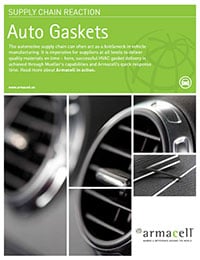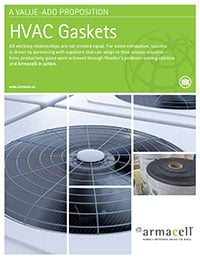.png?width=512&name=unnamed%20(3).png)
Manufacturers across the globe are constantly creating new, innovative products in markets like health and safety. To keep your business competitive, you need a process that gets results quickly. Rapid prototyping does just that.
For those unfamiliar with rapid prototyping, we’re going to break down what it is, when it’s needed, and how it fits into your current manufacturing process. This information can change the way you create products and increase your overall productivity, helping you remain ahead of your competitors in any industry.
What is Rapid Prototyping?
Rapid prototyping is a process for creating functional material test samples with a quick turnaround time, often without tooling investment.
The process starts when a customer provides a drawing exchange format (DXF) file with a fully dimensioned part. This file is then downloaded into Mueller’s nesting software, which they use to create a prototype part, generally within 24-48 hours if raw materials are available.
This process is the same across all industries: medical, industrial, aerospace, and more. All industries can benefit from rapid prototyping; there is no specific process for one over another. Everything depends on the DXF file provided and if Mueller has the materials necessary to create the test product in stock.
-1.jpg?width=512&name=unnamed%20(1)-1.jpg)
When is Rapid Prototyping Needed?
Rapid prototyping is an excellent choice when you need to qualify or verify what Mueller quoted you for a project. This process is a quick and easy way to sign off and do initial verifications before moving forward with your order. Your company might even require it as part of your development process.
Just like how rapid prototyping works in every industry, it also works for most applications and products, including:
- Gaskets
- EMI shielding
- Acoustic barriers
- Flame-retardant seals
The request for rapid prototyping is generated by your company and communicated with the estimating or engineering teams that you’re in contact with at your converter. You may also consider rapid prototyping for judging the flame retardancy, water absorption, and “form, fit, function” of a product.
Testing the “Form, Fit, Function” of a Product
Rapid prototyping is an excellent way to test a product's form, fit, and function. To do this, your business takes the prototype samples that your converter sends you and places it within a test unit. You would then put that unit through lab or chamber testing to make sure it:
- Fits the way you want it to
- Forms to your needs
- Functions how it’s supposed to
These tests can take time to complete depending on whether or not you send the product to a lab for testing or do it in-house, but with rapid prototyping you can have the samples needed to test within 24-48 hours.
There are other tests related to rapid prototyping, but the “form, fit, function” test is the most prominent. Your engineers might want to compare the prototype part to an already existing part and conduct visual and touch tests to make sure they are similar.
.png?width=512&name=pasted%20image%200%20(2).png)
Where Does Rapid Prototyping Fit Into the Manufacturing Process?
It is crucial to remember that prototypes are not true production samples. Rapid prototyping creates samples quickly and accurately to determine if they are fit for large-scale production.
The next step for many businesses is the production part approval process (PPAP). This is a first article inspection technique that determines if products are ready to enter full production. Quality assurance uses PPAP to inspect the prototype part and approve it.
A major reason why it’s important to differentiate between prototype and production is that rapid prototyping parts are usually created using different equipment than the production parts are.
For example, Mueller has more than eight different pieces of equipment used for prototyping, including a water jet. A part crafted in a water jet for prototyping might be created using an automatic press during production, which can result in minor differences.
How Can Rapid Prototyping Benefit Your Business?
The health and safety industry is always advancing. If you want your business and products to remain successful, you must quickly adapt and advance with it.
Rapid prototyping allows you to create and test new products with high speeds and get them into production faster. Your business can create products and components that you are confident in using this process.
Updating your manufacturing workflow to include rapid prototyping can help you stay ahead of the curve, no matter what industry you serve. Rapid prototyping is very beneficial to the health and safety market, but is applicable to all industries as well. This adaptable and wide-ranging process will lead your business to industry-leader status.






